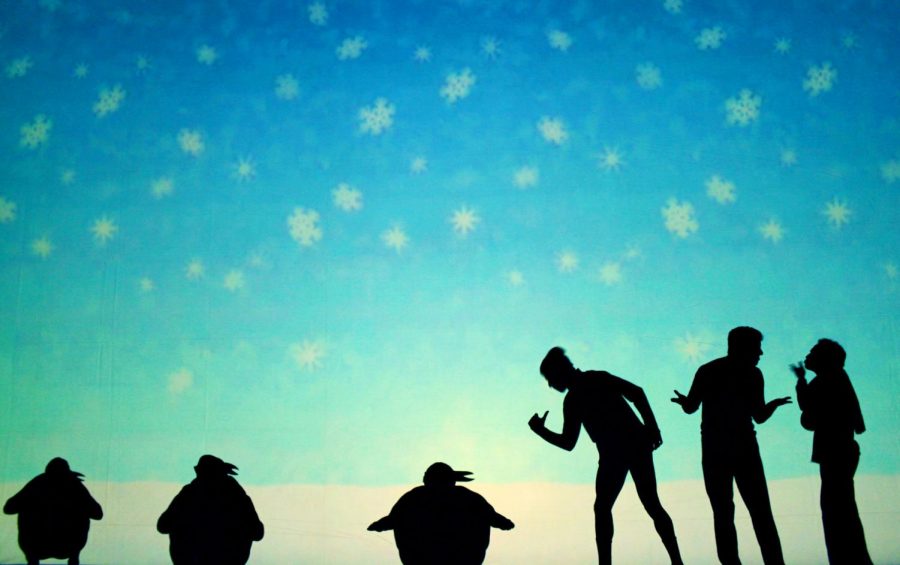‘Catapult’ redefines dance
Several of the Catapult performers took the shape of penguins in an arctic landscape in the “Four Seasons” segment on Oct. 20.
October 21, 2018
Shadows cascaded onto a large white screen Saturday at the Egyptian Theatre, 135 N. Second St. as Catapult took to the stage. The group tells a story through a sequence of images, constructed all from the shadows of their contorted bodies and an assortment of props.
The show was divided into a number of sections, the first being a representation of the seasons of the year set to Antonio Vivaldi’s “Four Seasons.” Passing through each season, the performers wove together narratives with thematic imagery. The group did a lot of heavy lifting to demonstrate their ability to create the shapes of recognizable animals and objects, like caterpillars and houses. The audience quickly warmed up to the group’s talent, applauding in awe throughout the show.
The show took a tonal shift following the lighthearted promenade through the seasons. The second section titled “Berlin Wall” showed the strife of those struggling for liberation under the German Democratic Republic of East Germany from 1961 to 1989. While the depictions of violence and darker themes felt like a hard left turn, the piece was haunting and deeply affecting. Early on, this segment displayed the group’s ability to tell powerful and evocative stories with their craft.
The use of the themed sections gave the show a sense of structure and narrative. The pacing never dragged, largely due to the narrative element of each section. In a highly stylized segment, “Spy,” a woman tries to keep her secret agent identity from her significant other. The story took place in two settings: inside her house and outside.
The quick transitions between settings proved the dancers had “shape shifting” down to a science. In seconds, the performers switched between an indoor kitchen setting with a counter and furniture to the outside of her house, with trees and a mailbox. After several quick transitions between two intricate settings, performers threw up their hands in exasperation as the spy went back inside her house, requiring another fast scene change.
A segment titled “Go West!” centered around the California Gold Rush and emphasized the dancing abilities of the performers. A segment telling the story of a prison break demonstrated how perspective and movement could create the illusion of figures sliding down escape routes and fleeing the scene by car. A segment about bullying struck an emotional chord as the shadow of a young girl battled the negative words of those around her.
With only props and bodies at their disposal, the innovative use of scale and perspective allowed the performers to create scenes with both physical and emotional depth. Never feeling gimmicky, Catapult mastered a form of experimental dance that demonstrates the power of movement and scene building.


